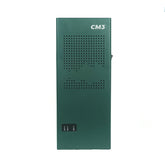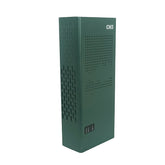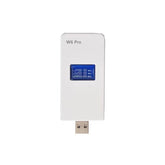Does the cell phone signal blocker consume a lot of cell phone batteries?
Question: Does the cell phone signal blocker consume a lot of cell phone batteries?
Reply:
Cell phone jammers consume a lot of battery for most cell phones. Because after the phone signal jammer is turned on, the signal between the mobile phone and the base station will be blocked, which is actually interfered and cannot form normal communication with the base station. Well, many mobile phones have this function: when there is no signal, the mobile phone has to work very hard to search for the signal, which leads to a lot more power consumption than the normal standby state!

Suggest:
If you are in the interference range of the mobile phone signal blocking device for a long time, turn off the mobile phone (no signal if it is not turned off) to reduce the consumption of the mobile phone battery, wait until you leave the interference range of the mobile phone signal blocking device and then turn on the mobile phone again.
It is in the interference range of the mobile phone signal shielding device for a short time, and the consumption of the mobile phone battery can be ignored at this time.













